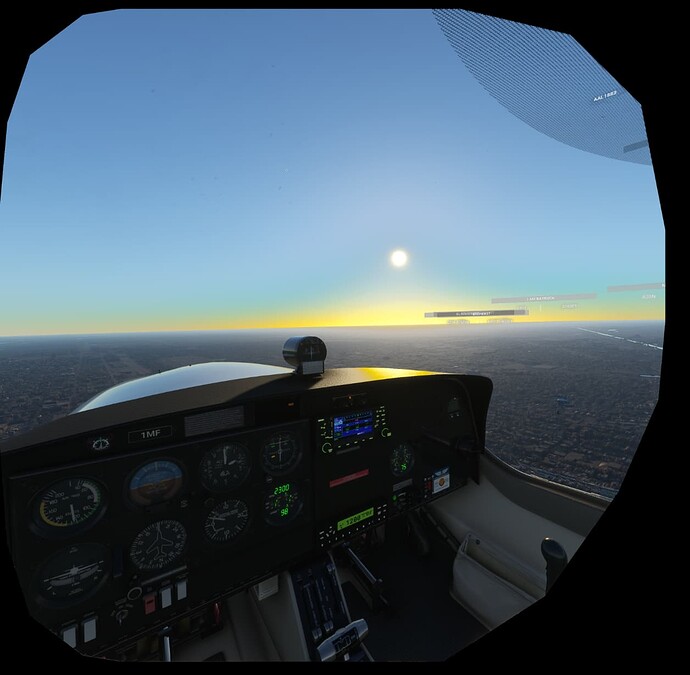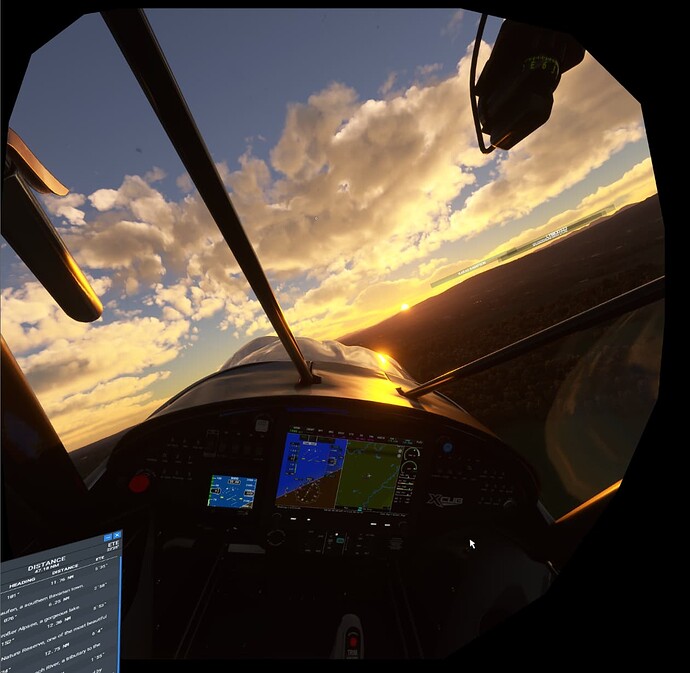As a real world pilot I assure you it’s not a matter of perception. While C152/C172 cockpits are small in the real world, in the sim they are ridiculously small.
There’s actually two scaling factor errors at play.
-
The render camera distance. This makes everything huge or small depending which way the error occurs compared to your own physical eyes. In the MSFS ICD is fixed thus if you have a smaller or a larger IPD you will experience the whole world being too small or too large. This can be fixed as a OpenXR API layer.
-
Model scaling error. Plane models are done in a different scaling factor than the rest of the world. This can be tested in a photogrammetry setting. Take a volocopter and find a standardized sea container modeled with photogrammetry. We know the dimensions of both volocopter and the sea container. Sea container appears to have around 75% of the scale that the Volocopter is. This scaling factor error is intentional to make flat screen users feel more comfortable in their rides. It can not be fixed in the OpenXR API layer. It’s only fixable by having a scaling offset only on the aircraft model itself. Ie. Asobo things. Fortunately if we fix #1 then this issue isn’t too pronounced and can be lived with.
Since the early days of ELSA Revelator Shutter glasses, (which was 1998, and later became Nvidia 3D Vision) I used stereoscopic 3d on pc and what I lerned is, that “Convergence” setting plays a main role in percieved scale. It’s not only and not in the first place ICD or IPD. Fire up Google Earth VR and you will see Auto Convergence in action.
First of All, thanks a million to @mbucchia for the awesome NIS scaling config tool - certainly my favorite VR toy lately! 
Now with regards to the VR IPD/ICD discussion, are you guys familiar with IL2 - Battle of Stalingrad in VR? In my eyes, this sim has an awesome VR integration and by default you have the possibility to adjust the ICD in VR in real-time (LSHIFT + keypad+ / keypadENTER) in small % steps. It’s fun to watch this way how the cockpit and plane around you grows bigger or shrinks and to find the sweet-spot when the world-scale looks perfectly right.
I would love to get such an easy working feature in MSFS and finally be able to “make” my C152 a bit bigger and my A320 quite a bit smaller. I’m sure you all can relate with that… 
Happy flying everyone!
So did people try that brightness hack from avsim forum? How is it working with you? Havent tried yet, too little amount of time atm to test all these hacks and settings.
Source: https://www.avsim.com/forums/topic/611783-msfs-vr-fps-mod/?do=findComment&comment=4690794
I am referring to VR lighting when you go through cloud at night or during the day. In the last version of MSFS you used to be able to see your lights through the clouds, beacons flashing in the cloud and the light bouncing off… That no longer happens and ruins the immersion in VR. It happens in 2D.
are you saying you feel too small in the A320?
I did some limited testing. As also stated in that forum, at least with the G2, the effect is very subtle. At first I wasn’t sure it was having any affect at all, but you can see it is a little less bright with the value set to -300.
I’ll have to play with it some more in different lighting situations to see if it has any major impact.
Es exactly, I’m too small in the A320 with the ICD as is…
Can it be adjusted more than -300? -1000?
I am unable to reduce the FOV much before I see the border, especially on head turn, and I personally don’t like to see the border as it moves at 25fps whereas rotating my head without seeing the border gives the illusion of a higher refresh rate.
I am thinking maybe it would be nice if it could be possible to customize this FOV border on the top, bottom, left and right independently? The reason I ask is I have noticed that my eye can see almost to the edge of the 100%fov to the bottom, left, and right. However there is a huge amount of fov at the top of the rendered image that I am unable to see, and I suspect I could cut 20% of top FOV for a big performance gain for free. I guess this could be different for everyone depending on their headset, their iPd , shape of face ( how the headset sits versus their eye) etc and therefore require independent customisation of the FOV borders on each side.
Thanks once again for your endeavours !
I am using an Oculus Quest 1 and don’t have that directory. Would I change the NIS_Main.hlsl in here C:\Program Files\OpenXR-NIS-Scaler\NVIDIAImageScaling\NIS ?
I hate the over-exposure in the Oculus and would love to tone it down a bit.
The tool itself is working very well since I turned off the sharpening in the config file.
That’s what we tried on the other thread of this forum, 4 customizable FOV angles to achieve this sort of effect. The gain was no FPS.
That’s exactly what I plan on implementing in the next version of my software!
I can’t seem to find the comment you are referring to but that is interesting - with Oculus debug tool users have always found big performance increases by reducing the FOV and therefore pixels rendered, in line with expectations when GPU limited
I can dig up the thread but TBH it will be easier with the newer toolkit so probably worth waiting instead.
confirmed but too much yellow in G2, how to reduce those color?
You can, but as is pointed out here as well as by RXP in the avsim forum, the colors start to go wonky after about -150 to -200.
Here’s a “0” and a “-600” to showcase said wonky colors…
Agreed. I’ve pretty much settled in at -200. I don’t notice any discoloration but I do notice a slight dimming of the brightest areas. This beautiful screenshot was taken with that setting just after departing EDYW at dawn in the Alpine Challenge bush trip.
I’ve used -200 and noticed slight decrease in brightness. Still too bright though.
Me too, -200 was the best. Did make bright white grass sports field to be seen as true green grass field. Same to red Tennis fields.


